Tangy, creamy and sweet, this homemade Lemon Curd is a summer favorite of mine! Lemon, sugar, eggs and butter are all you need to make this easy lemon curd.
Just like my passion fruit curd and pineapple curd, this lemon curd is also a versatile addition to many types of dessert recipes!
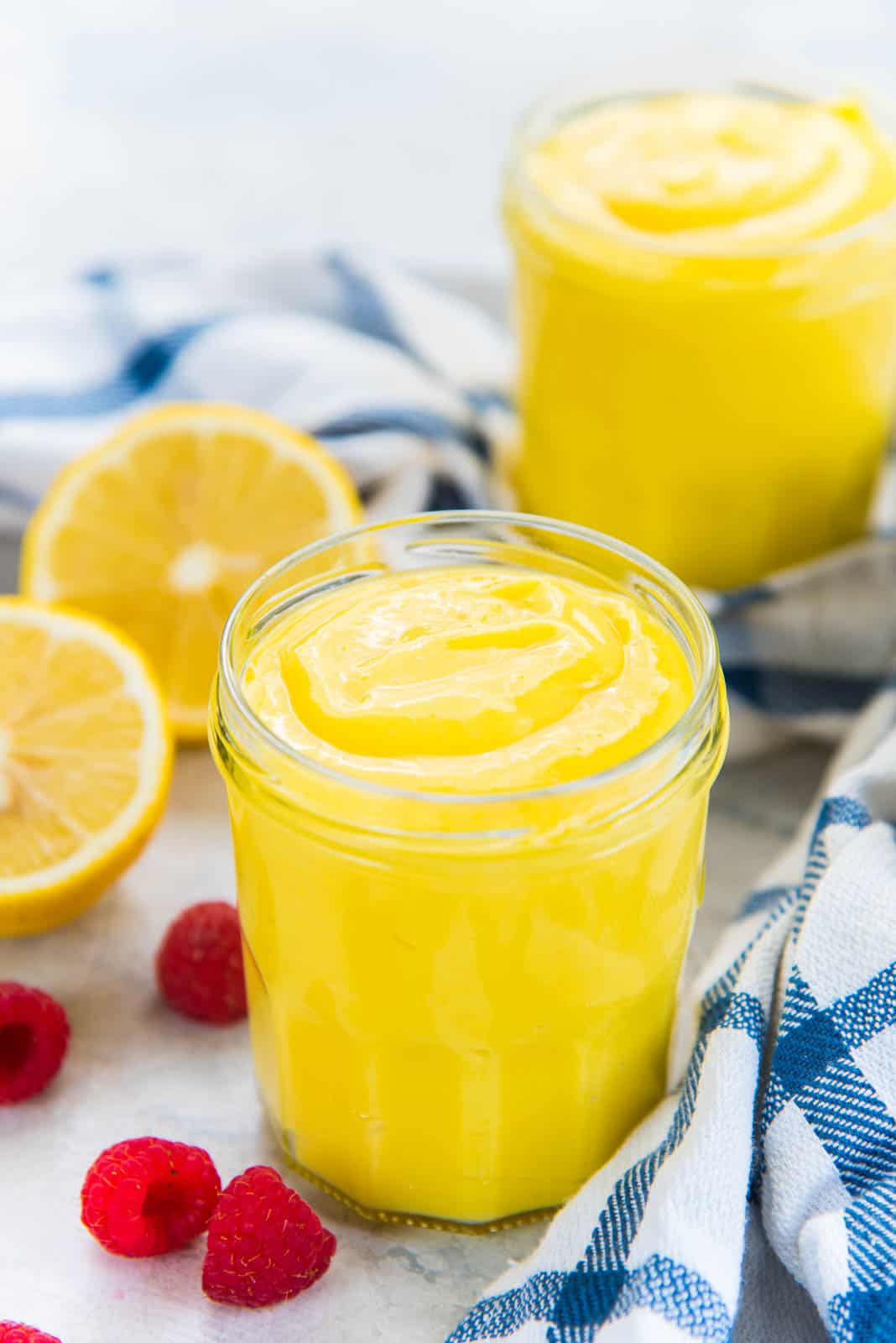
Tangy, tart flavor of lemon is PERFECT for desserts during summer. Color changing lemonade and lemon sherbet are great options, but I also LOVE keeping a jar of tangy, sweet, creamy lemon curd in the fridge at all times in the summer.
Homemade lemon curd slathered on toast is one of our favorite and simple brunch ideas in the weekend, and we often use it to top yogurt and parfaits as well. Or just eating it by the spoon, straight out of the jar works too.
Making lemon curd is easy! My first attempt at lemon curd was Ina Garten’s recipe many years ago. It was great, BUT deathly sweet. And that’s saying something, because I’ve got a vicious sweet tooth. I also like my lemon curd to be thicker than Ina Garten’s recipe.

I’ve tried a number of recipes since then, and especially loved David Lebovitz’s lemon curd recipe. It’s more of a high risk recipe because you cook the lemon curd on medium high heat until it thickens to a jelly-like consistency.
I’ve had more hits than misses with this recipe, but I do find that on occasion, I end up with a grainy consistency in my lemon spread (because of the eggs scrambling).
My easy lemon curd recipe is a happy medium of these two. It’s not as thick as Ina Garten’s recipe, and has that strong lemony tangy flavor, without all the sweetness.

What’s the difference between lemon curd and lemon butter?
Well, there is no difference. The names are used interchangeably to describe the same thing – a delicious, spreadable lemon spread.
Some don’t prefer the word “curd” to describe lemon butter, because curd implies a set yogurt-like dessert. Lemon curd is more like a custard, as it’s a mixture of lemon juice thickened with eggs. Plus, this lemon butter/lemon curd is made with butter, and is buttery in taste, and is spreadable like butter too. So lemon butter may be the more appropriate term.
Either way, this lemon curd by any other name would taste just as deliciously tangy, creamy and sweet!
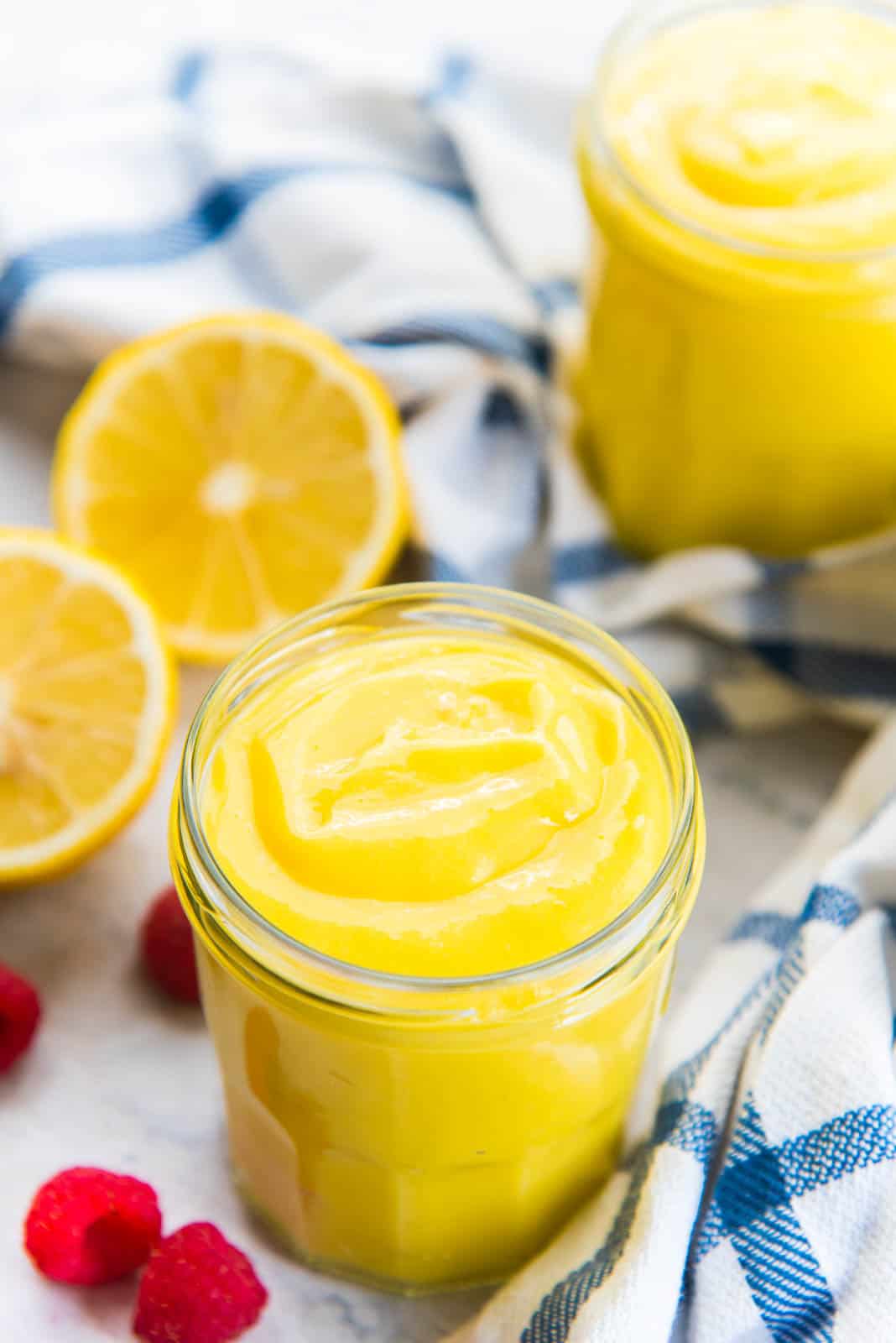
How to make lemon curd
Homemade lemon curd is easy to make, but you do have to stand over the stove stirring the mixture to prevent egg scrambling. But when the whisking is the hardest part of the recipe, you know you have a keeper.
All you need to make lemon butter/lemon curd is,
- Lemon
- Sugar
- Eggs
- Butter
For every 1/2 cup of lemon juice, I use 1/2 cup of sugar (100 g). I also like to use 1 egg and 3 egg yolks. This helps thicken the lemon curd more, while not diluting the lemon taste. Another trick I like is to process lemon peels with the sugar (like Ina Garten’s recipe), to make the lemon curd extra flavorful.



There’s no creaming butter, sugar and eggs together in this easy lemon curd recipe. Just whisk the eggs and sugar together to get a smooth consistency first, then add all of the other ingredients and heat over medium heat. Then make sure you’re whisking frequently to get a smooth, thick consistency.
Once you reach the right consistency, strain the lemon curd and let it cool down to room temperature. Store your homemade lemon curd in sterilized jars in the fridge to chill overnight, and then it’s ready to be eaten!


What is the consistency of this lemon curd?
This lemon butter recipe is heated to about 190 – 200°F, resulting in a luscious, spoonable, thick but loose consistency. The lemon curd is spreadable, but doesn’t hold its shape.
It’s perfect to spread on toast (like this easy cinnamon toast), or as a topping for parfaits, yogurt, or even other desserts such as panna cotta or ice cream recipes (like classic vanilla ice cream).
This lemon spread is perfect even as a filling for cake recipes (like my classic vanilla cake). But please note that it is soft. If you’d like a thicker, more spreadable lemon curd that holds its shape, this recipe can EASILY be adapted for that.
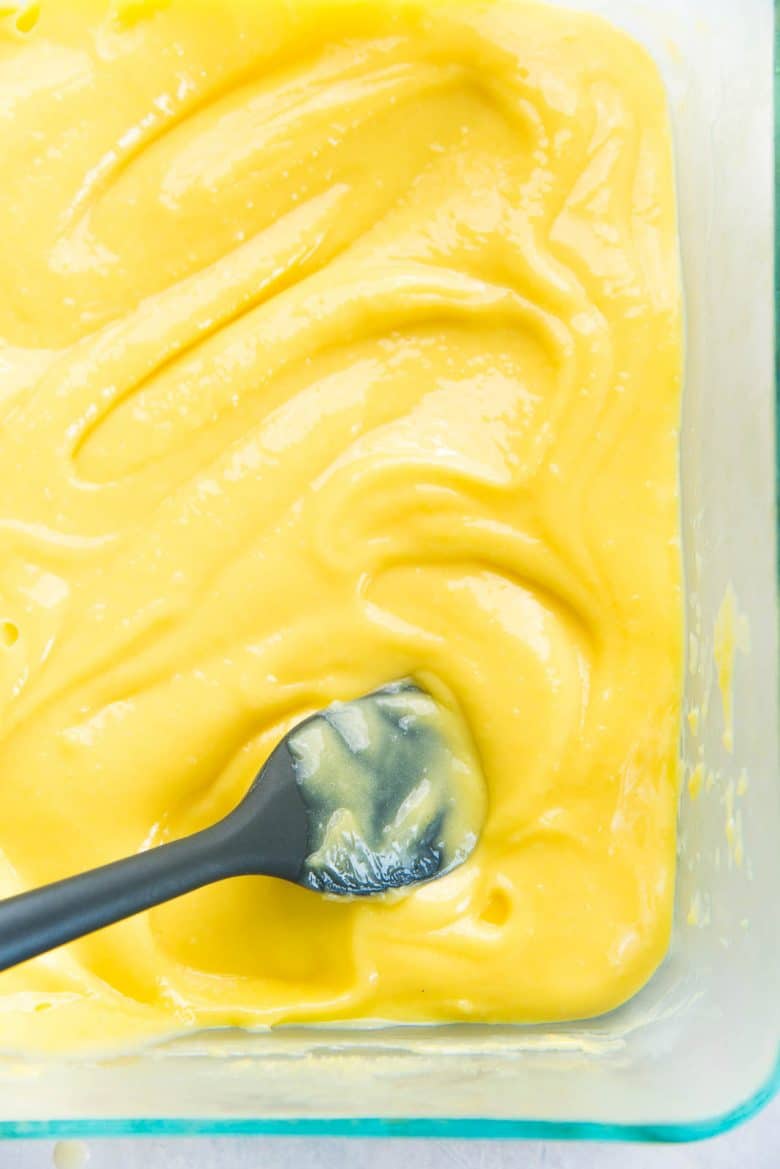
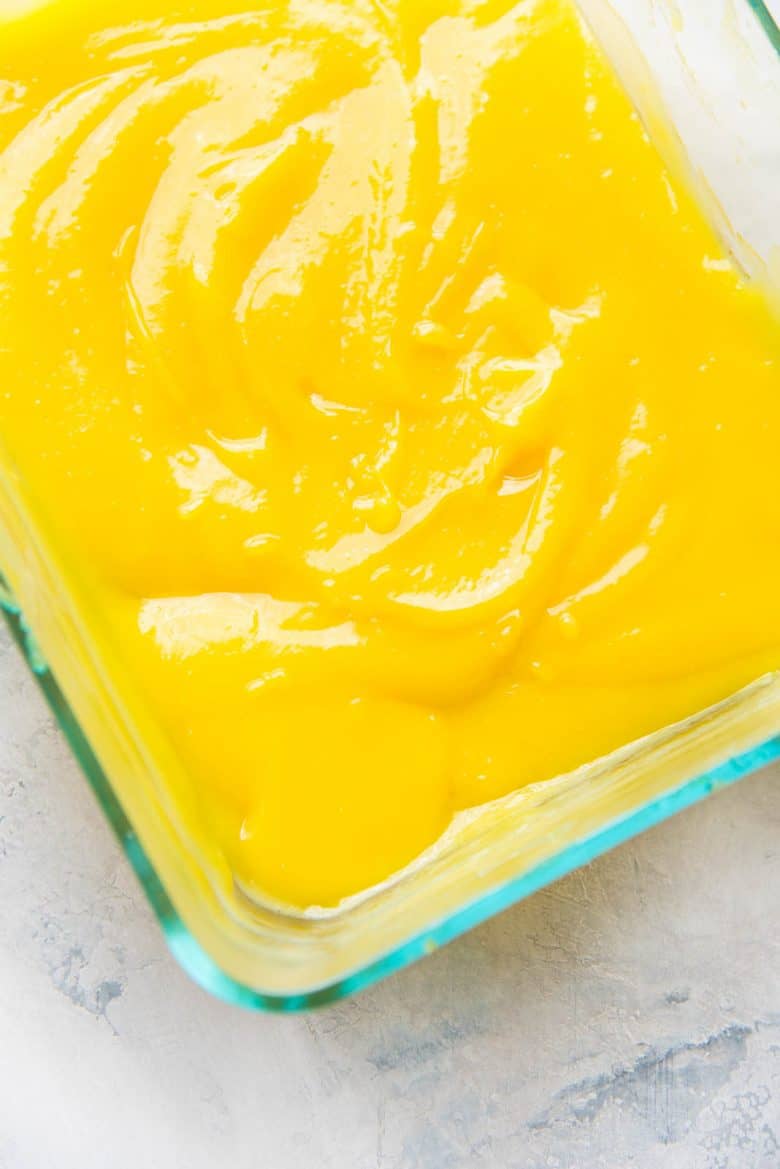
How to make lemon curd thicker
The best way to make the lemon curd extra thick and spreadable, is to heat it further to a jelly-like consistency. It’s VERY important to keep whisking the lemon curd continuously until you get this consistency to prevent any lumps from forming in the curd.
The lemon curd on the left has been cooked for about 10 minutes (200°F), while the lemon curd on the right has been cooked for 15 minutes for a more jelly-like consistency

You also have the option of adding a thickener like cornstarch or more egg yolks. Both methods are acceptable, but I personally prefer not to add a thickener.
Adding cornstarch can cause the lemon curd to form a film on top as it cools down. And adding more egg yolks will thicken the curd, but it will dilute the lemon flavor as well. So cooking it further is my preferred way to make a thicker, pipeable lemon butter or curd.
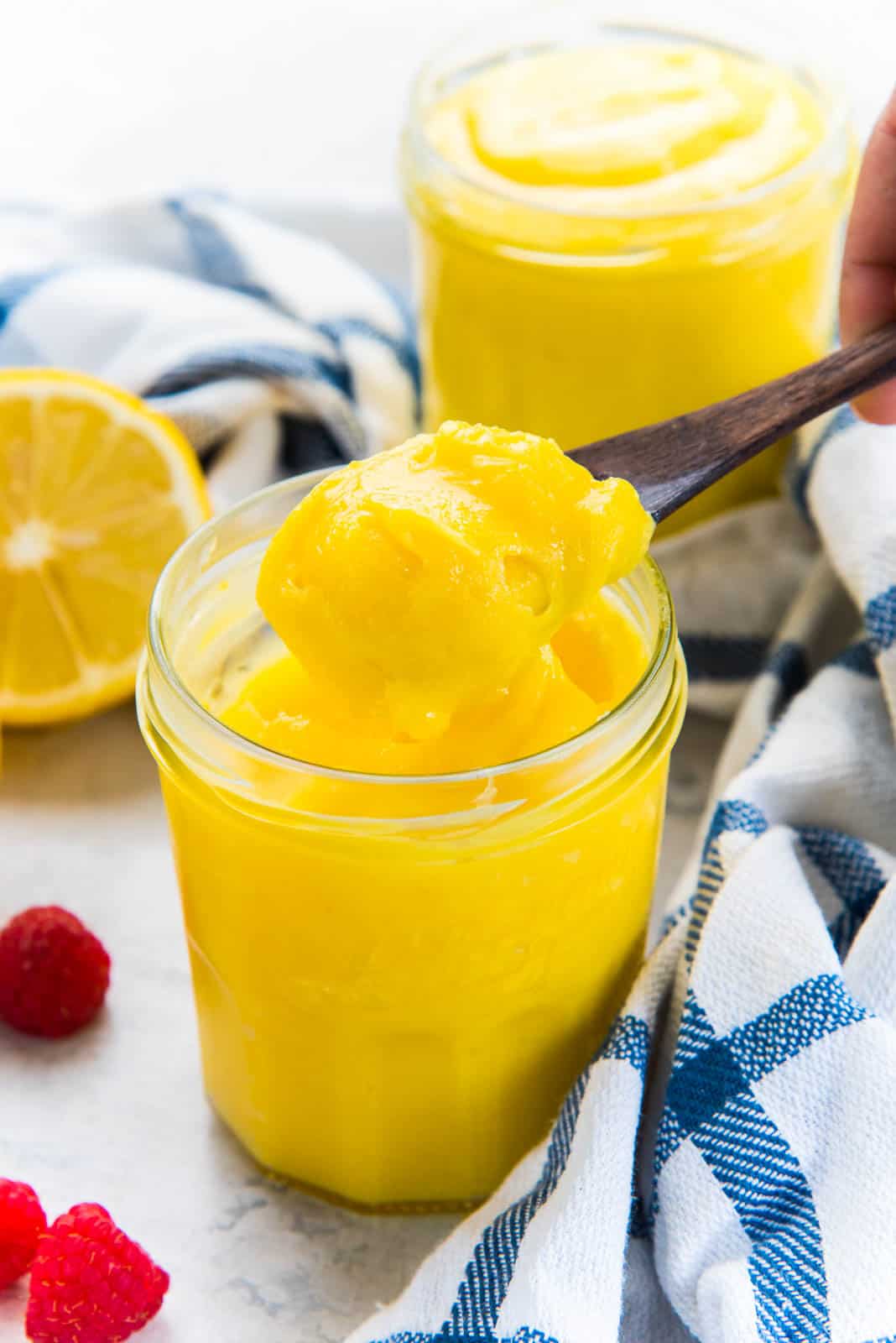
Storage instructions
We keep our lemon curd in a jar for about 1 week.
If you use sterilized jars, you could keep it for about 1.5 – 2 weeks. However, if you can the lemon curd, then it can be kept even longer. Since I’m definitely not an expert in canning, I would suggest reading this post on canning lemon curd/lemon butter.
How to enjoy lemon curd (lemon butter)
- Spread it on warm toast
- Spoon it over yogurt or vanilla ice cream
- Or make the most creamy lemon ice cream ever!
- Spoon it over granola
- Top other desserts like this coconut panna cotta
- Mix with vodka for an amazing lemon meringue cocktail
- Perfect to fill layer cakes like my classic vanilla cake (or see this lemon raspberry cake that uses this lemon curd as a filling between layers).
- To serve with pound cake slices
- To make the best no bake lemon cheesecake bars
- Fill mini pastry cases to make mini lemon meringue pies
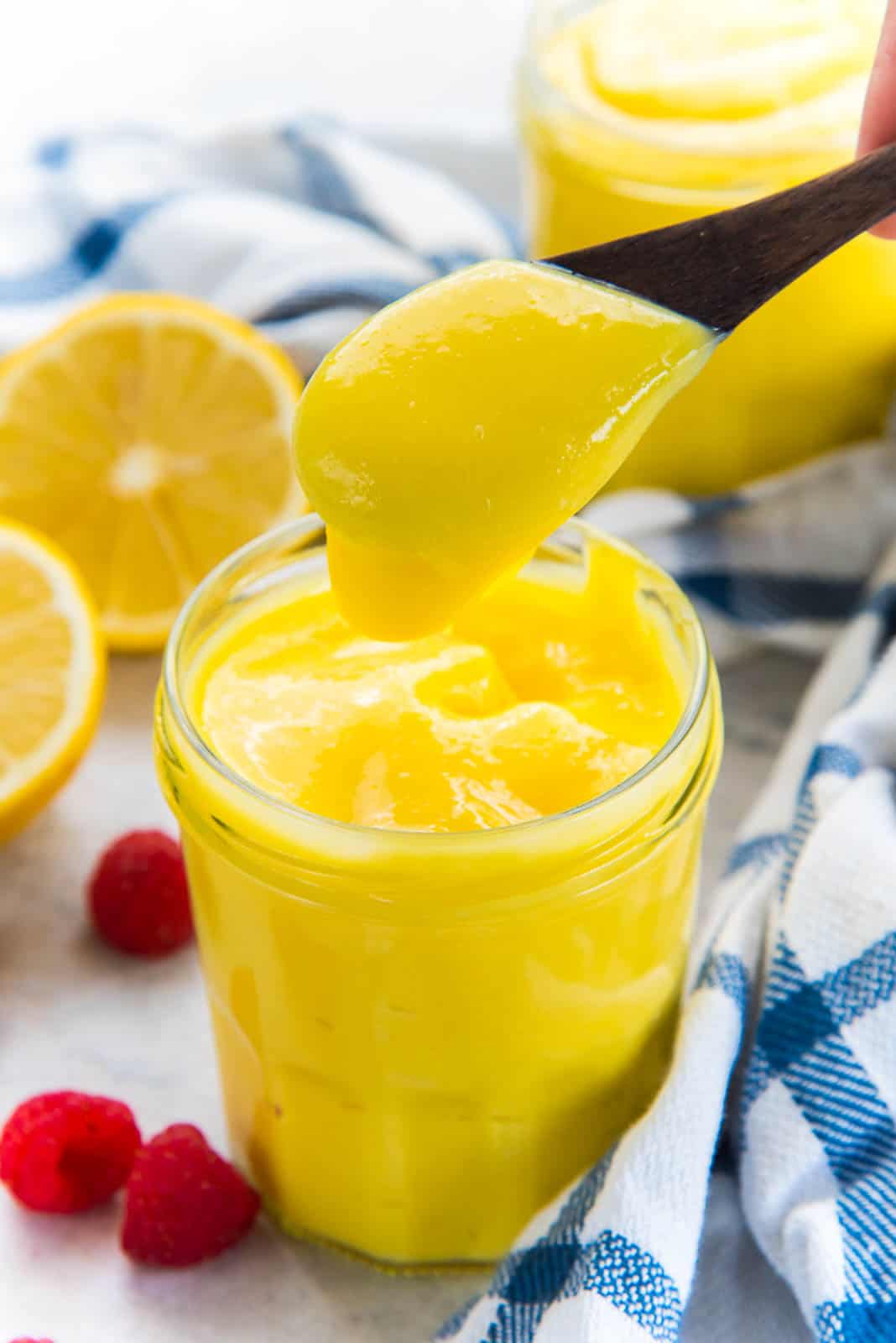
If you liked this easy lemon curd (lemon butter) recipe, don’t forget to subscribe for new (and free) recipes by entering your email address in the subscription box below the recipe card (and get all these recipes delivered straight to your inbox), so you don’t miss out on a thing. You can find me on FACEBOOK, TWITTER, INSTAGRAM, PINTEREST, and YOUTUBE too.
Other recipes you may like
- Raspberry and lemon cake (with lemon curd filling)
- Ultra creamy lemon ice cream (that uses lemon curd)
- Lemon meringue cocktail (that also uses this lemon curd recipe)
- Classic pound cake
EQUIPMENT I USED FOR THIS RECIPE
THERMOMETER – An inexpensive Cooking thermometer or a more expensive instant read thermapen.
WHISK – To stir the lemon curd
SPATULA – To stir the lemon curd
GLASS JARS – to store the lemon curd
Looking for more recipes?Sign up for my free recipe newsletter to get new recipes in your inbox each week! Find me sharing more inspiration on Pinterest and Instagram.
Lemon Curd (Lemon Butter)
Ingredients:
- Lemon zest from 3 – 4 lemons
- ½ cup white sugar
- ½ cup lemon juice from 3 – 4 lemons
- 1 egg
- 3 egg yolks
- Generous pinch of salt
- ¾ cup unsalted butter cut into small pieces
Instructions:
- Zest all lemons, and then squeeze the juice out of all of them to make ½ cup of juice (strained).
- Alternatively, carefully peel the lemon skin (just the yellow part, avoid the white part), and then squeeze out the juice to make ½ cup of strained juice.
- Place the lemon peel and sugar in a food processor and process until the lemon peel is finely processed with the sugar. If you're using a lemon zester, then you can skip this step.
- Place the sugar, lemon zest (or lemon peel processed sugar), eggs, egg yolks, and salt in a medium-sized saucepan. Whisk until you have a smooth and pale mixture.
- Whisk in the strained lemon juice, and add the butter.
- Heat the mixture over medium heat while whisking frequently to melt the butter. Once the butter is melted, increase the heat to medium high and whisk the mixture more frequently, until it registers at 200°F for a total cook time of about 10 minutes.
- For a thicker lemon curd – if you want a thicker lemon curd, cook further until the lemon curd has a jellied consistency, for a total cook time of about 15 – 18 minutes. Make sure you're CONSTANTLY whisking slowly to prevent the lemon curd from scrambling or splitting.
- As soon as the lemon curd reaches the right consistency, strain it immediately into a flat container to cool down quickly. Then place a plastic wrap on top, touching the surface of the lemon curd (to prevent a skin from forming on top), and let it cool down to room temperature.
- Let the lemon curd chill overnight in the fridge.
- Alternatively, transfer the hot lemon curd into sterilized jars, and let them cool down to room temperature, while the surface is covered with plastic wrap (that's touching the surface of the lemon curd), and the jars are closed with lids.
- Once at room temperature, chill in the fridge.
- Use as needed. The lemon curd will keep up to 10 days in the fridge.
Nutrition Information:
“This website provides approximate nutrition information for convenience and as a courtesy only. Nutrition data is gathered primarily from the USDA Food Composition Database, whenever available, or otherwise other online calculators.”

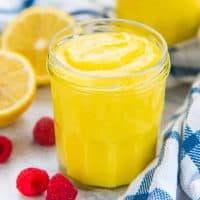
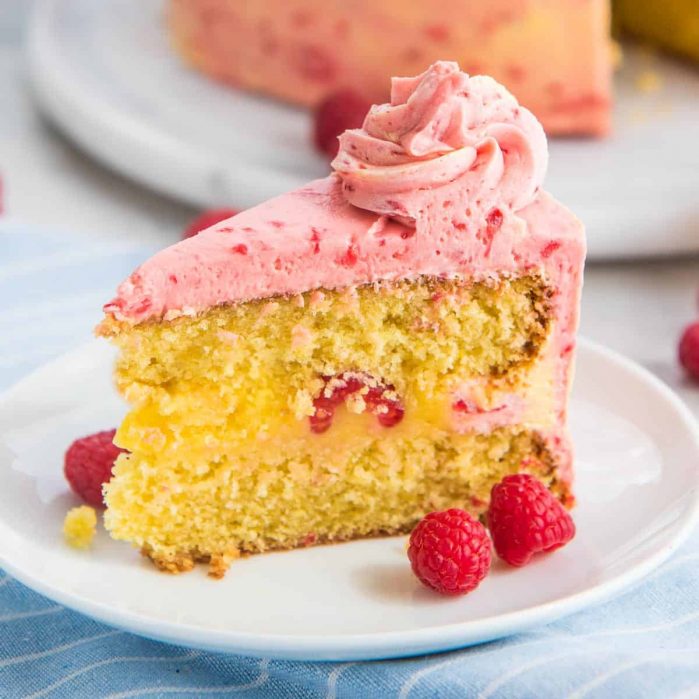
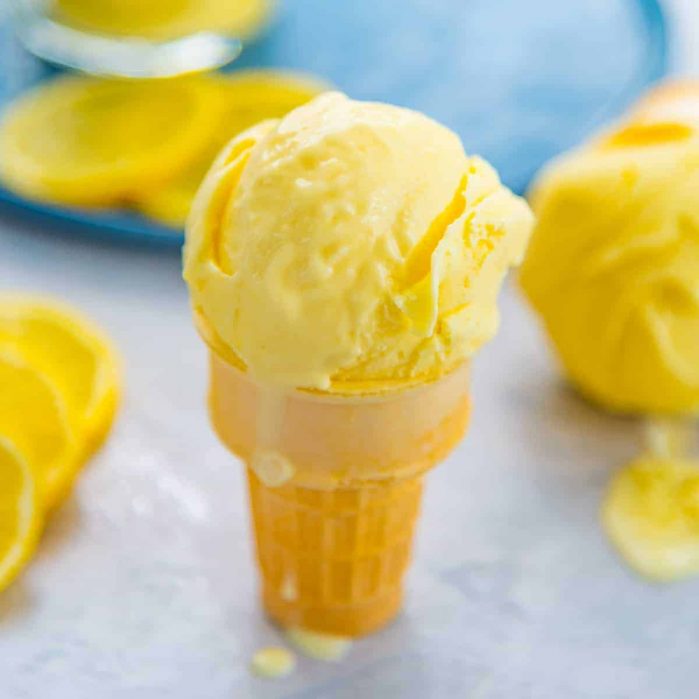

Alexa Perez says
This recipe was so easy to make! I made this once for thanksgiving to go on my Pavlova and everyone absolutely loved it. They requested I make it for every holiday and birthday (especially with the lemon curd). It was the thing that pulled it all together. This is the second time I made it. I made a much bigger batch, but im wondering if I could freeze it? I can’t wait to see what else I can use this on. It came out perfectly every time.
Dini says
Hi Alexa
I have frozen my lemon curd as well, and have used it without no issues! I let it thaw out in the fridge and give it a stir to make sure its smooth.
I’m so glad you liked the recipe. A nice tangy lemon curd is definitely one of best toppings for a pav!
Thank you for letting me know!
Ellis says
Too sour, ridiculous amount of butter. I would suggest this recipe to just be named as “lemon butter” and get rid of the name “lemon curd”.
For anyone who messed up and made their lemon butter curdled, I managed to “save” it by blending it with a stick blender, vigorous whisking (emulsifying like salad dressings), adding some gelatin, then putting the whole thing in the fridge. It’s probably not the exact same as the ideal product? but it is one usable filling.
Dini says
Hi Ellis
This is a lemon curd recipe with more prominence in the flavor of lemon, without the sugar overpowering it. Butter is what makes a lemon “curd” extra creamy as well (as you can see in the recipe it’s already called “lemon butter” too, but you may have missed it).
However, if this recipe isn’t sweet enough or it’s too buttery for you, I definitely recommend following a recipe for lemon jam instead of lemon curd! Lemon jam is more sweet than tangy and also contains no butter, so that might be what you’re looking for.
I hope that helps!
Paula says
Love how simple the method is and that it is less eggie than some recepies. I didn’t have any problem with the butter but I interpreted the 3/4 C as butter pieces. That was an unusual way to measure and could be variable.
I also used older eggs and whisked it constantly while it was heating up – I didn’t need to strain it at the end.
Heeza says
My lemon curd turned out gross!! I was tasty but the oil kept coming to the top . I drained much of it off, but it is still very oily. I’d also prefer to have a measurement of salt as opposed to a subjective amount.
Difficult to rate this recipe because it didn’t turn out for me – likely “cook’s error.)
Dini says
Hi Heeza
If the oil separated from the curd, that means the lemon curd was overcooked and the butter in the curd split into fat. Unfortunately there isn’t a way to fix it rather than “tempering it” with another batch.
I like to add more salt than usual to my lemon curd, but others prefer less salt. You can add about 1/4 tsp of salt first, and add more if you want – it doesn’t have to be an exact measurement because it can be subjective.
I hope that helps.
Kim says
I picked this recipe because of all the comments. But i ended up with the curd with way too much butter separating on top when i poured it out to cool. 3/4 cup of butter is too much butter. I found several other recipes that use much less in proportion. I had to make the curd, so i quickly found one with 1/4 cup butter that would work with the two remaining lemons i had and the leftover juice from my first batch that was perfection. Was that a typo? spent a lot of time making this and it turned into a buttery floating stew.
Dini says
Hi Kim!
Sorry the recipe didn’t work for you!
The only way the butter separates is if you heat it too quickly or too much, so that it doesn’t emulsify and/or splits.
As you can see from other reviews this recipe works well, and the higher content of butter helps keep the spread very spreadable and buttery. So it’s perfect as a cake filling as well as on toast too.
Kat B says
The recipe is very easy to follow, even for someone who’s never made a curd before! The tartness, sweetness, and butteriness all balance each other really well. Can’t wait to make it again!
Maureen Henderson says
I found your article on pavlova amazing & absolutely love your recipes. Thank you so much
Rilla says
Does the 4th step happen over the stove?
Dini says
Hi Rilla,
You start cooking the lemon curd from the 6th step, as indicated in the recipe.
I hope that helps!
Candy says
Info at beginning says 1/2cup sugar to 1/2 cup juice but recipe says 3/4 cup sugar with 1/2 cup juice.
Dini says
Hi Candy,
I have fixed the typo. The info was correct. This curd has a strong lemon flavor and isn’t too sweet, so it’s 1/2 cup lemon juice + 1/2 cup sugar. Thank you for letting me know!
Kim Doxey says
I live in Florida so we do a lot of stuff with citrus of all types. There are a couple of the tricks grandma taught me. First, always use a microplane to zest the fruit, it will never cut the bitter white pith. Second is to take the strained citrus juice, add in the zest and simmer it on the stove (in a stainless steel pan) or microwave in a glass measuring cup at 50% for a few mins, and let cool back to room temp. This brings out a lot more of the zesty goodness.